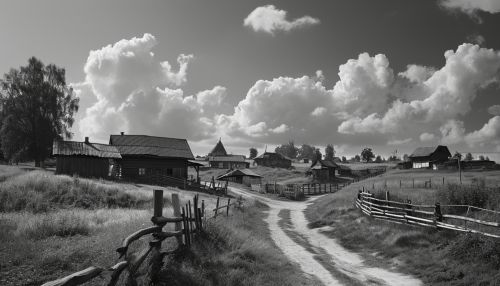Andrei Tarkovsky
Early Life
Andrei Arsenyevich Tarkovsky was born on April 4, 1932, in Zavrazhye, a village in the Ivanovo region of Russia. His parents, Arseny Tarkovsky, a poet and translator, and Maria Ivanovna Vishnyakova, a literature graduate, separated during Andrei's childhood, leading him to spend much of his early life with his maternal grandmother in the village of Yuryevets.
Tarkovsky's early exposure to the arts, particularly literature and music, played a significant role in shaping his artistic sensibilities. His father's work as a poet and his mother's literary background fostered an environment that encouraged creative expression. Tarkovsky's early education was also marked by the influence of the Russian Orthodox faith, which would later permeate his films.


Education and Early Career
In 1951, Tarkovsky enrolled at the Moscow State University's Oriental Studies department, but he soon transferred to the All-Union State Institute of Cinematography (VGIK), where he studied film direction under the tutelage of Mikhail Romm. At VGIK, Tarkovsky made several short films, including "The Killers" (1956), "There Will Be No Leave Today" (1958), and his diploma film "The Steamroller and the Violin" (1960).
Filmography
Tarkovsky's filmography, though limited in number, is renowned for its thematic depth, stylistic innovation, and philosophical introspection. His films often explore themes of memory, dreams, childhood, and spiritual transcendence, employing a distinctive cinematic language characterized by long takes, metaphysical symbolism, and a contemplative pacing.
Ivan's Childhood (1962)
Tarkovsky's first feature film, "Ivan's Childhood", is a war drama that tells the story of a twelve-year-old boy serving as a scout in the Soviet Army during World War II. The film won the Golden Lion at the Venice Film Festival and established Tarkovsky as a significant figure in world cinema.
Andrei Rublev (1966)
Tarkovsky's second feature, "Andrei Rublev", is a historical epic based on the life of the 15th-century Russian icon painter. The film's non-linear narrative, spiritual themes, and visceral depiction of medieval Russia were met with controversy upon its release but have since been recognized for their artistic merit.
Solaris (1972)
"Solaris", Tarkovsky's third feature, is a science fiction film based on the novel by Stanisław Lem. The film, often seen as a response to the technocentric optimism of Western science fiction, explores themes of consciousness, identity, and the limits of scientific understanding.
Mirror (1975)
"Mirror" is a semi-autobiographical film that employs a non-linear narrative to explore the themes of memory, childhood, and the passage of time. The film's poetic visual style and introspective tone have made it one of Tarkovsky's most acclaimed works.
Stalker (1979)
"Stalker" is a science fiction film that follows a guide leading two men through a mysterious, post-apocalyptic landscape known as the Zone. The film's philosophical dialogue, atmospheric visuals, and slow pacing have made it a cult classic.
Nostalghia (1983)
"Nostalghia" is Tarkovsky's first film made outside of the Soviet Union. The film tells the story of a Russian poet living in Italy, exploring themes of exile, homesickness, and spiritual longing.
The Sacrifice (1986)
"The Sacrifice" is Tarkovsky's final film, a Swedish production that tells the story of a man's spiritual crisis in the face of an impending nuclear holocaust. The film won the Grand Prix at the Cannes Film Festival.
Legacy
Tarkovsky's work has had a profound influence on both Russian and international cinema. His distinctive cinematic style, marked by long takes, metaphysical themes, and a contemplative pacing, has inspired many filmmakers, including Lars von Trier, Béla Tarr, and Alexander Sokurov. Tarkovsky's films continue to be studied for their innovative narrative structures, philosophical depth, and visual poetry.
